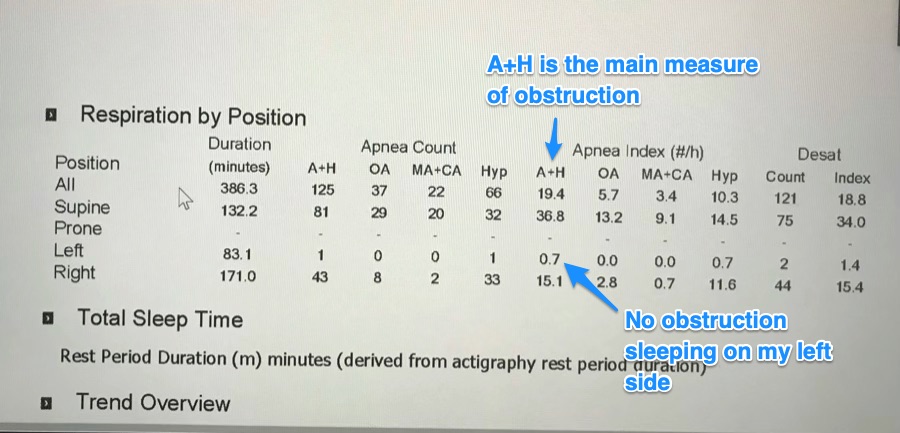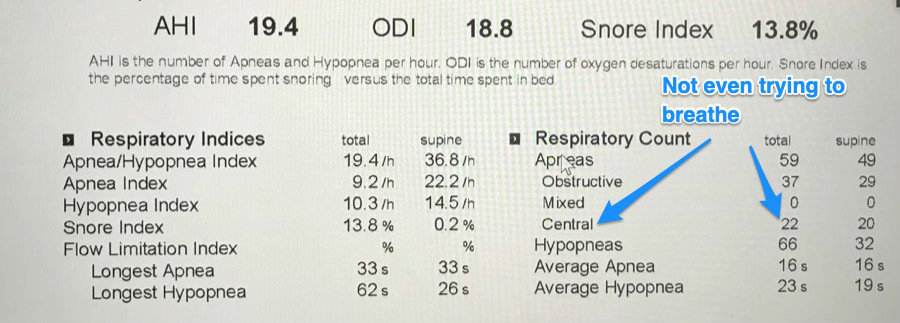In case this might help anyone else, I thought I’d share this information. I was having a weird problem where some mornings when I woke up my blood pressure would be really high, so long story short, I did an at-home sleep study a few weeks ago, and went over the results with a doctor this morning. I’ll include the doctor’s notes with each image.
Image 1: The “A+H” metric
In the first image, “A+H” is the main metric they use. It measures the average number of apnea events that occur per hour while you’re sleeping.
In my case, a 19.4 overall average means, “Yes, you have apnea.” The 36.8 value means, “you have really bad apnea on your back, don't sleep there.” Interestingly, 0.7 means “you have no apnea when sleeping on your left side, so sleep there as much as possible.” I’ve known for years that I sleep better on the left side, so the doctor encouraged me to sleep on that side as much as possible.
Here’s that image:

Image 2: Apnea events and low oxygen levels
On this next image, the horizontal lines attempt to show my sleeping posture. However, I know that they aren’t 100% correct, because I slept for 2.5 hours in my recliner, both at the beginning of the test and at the end.
I think the vertical stripes show the events during the night. You can also see that many events lead to low oxygen levels.

Image 3: Apnea, oxygen, and adrenaline spikes
In case I have the events wrong in that image, I include a second image of them here.
A key is that in the bottom graph — when I stop breathing and can't get enough oxygen — I get these adrenaline spikes that wake me up to start breathing again.
So, some nights I don’t feel very well rested in the morning because my body is shooting out adrenaline several times a night.

Image 4: Central apnea
The most important finding in this next image is that there were 22 events during the night where my body didn’t even try to breathe. On this image, “Obstructive” means that you have some sort of physiological problem that stops you from breathing; a physical obstruction. “Central” means that for whatever reason, your body doesn’t even try to breathe.
I actually only slept only slightly more than four hours, so when you do the math, that’s five central events per hour, meaning that my body has no desire to breathe once every twelve minutes.

Image 5: Central apnea, and further studies
In this last summary image, the “central” problem is more of a concern than the “obstruction” problem, so they recommend more testing in a lab environment.
It’s also important to note that home studies typically underestimate what’s going on because of the limitations of the equipment compared to the lab. The doctor mentioned this several times.

Parting thoughts
The other thing I’ll add is that I initially had no interest in taking this home sleep study test, but in retrospect, I’m glad I did. Doctors recommended it because of the high blood pressure first thing in the morning, and from this test they can conclusively say that it can be high because of what’s going on during the night. So you treat this and you fix the blood pressure issue.
So if you ever need to take a home sleep study test, I hope this is helpful.
All the best,
Al



